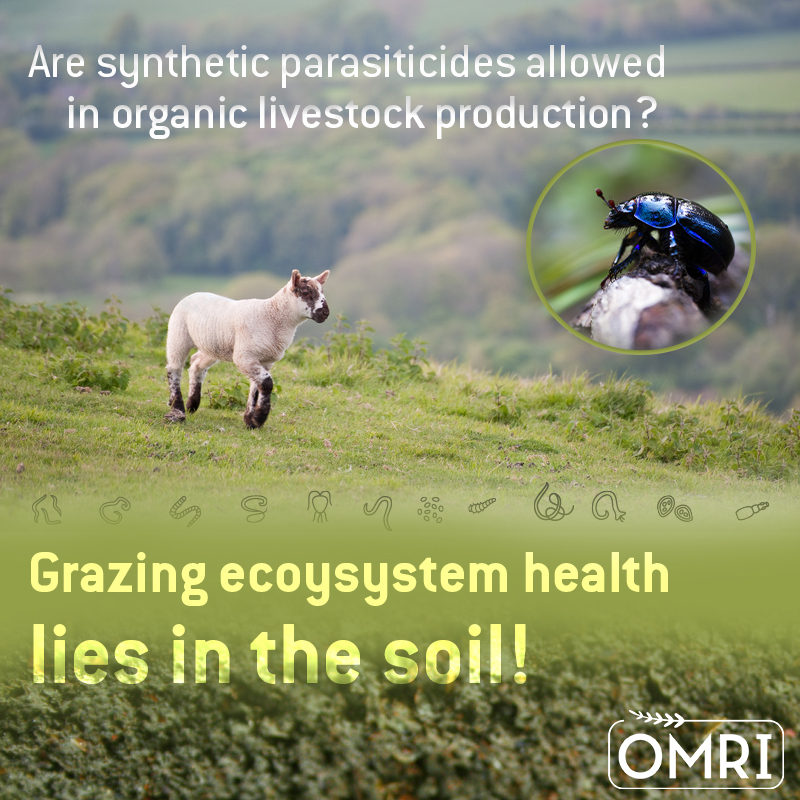Livestock Parasiticides
 By Tina Jensen Augustine
By Tina Jensen Augustine
The use of internal parasiticides in organic livestock production is permitted under the livestock health care practice standard at §205.238 for emergency situations when preventative practices and veterinary biologics have failed to control a parasitic infection. There are two synthetic parasiticides permitted on the National List at §205.603(a): fenbendazole and moxidectin. The synthetic parasiticide ivermectin is no longer allowed in organic production. Routine use of these materials is prohibited, and their use is also prohibited in slaughter stock. Use of these materials is also prohibited in breeder stock during the last third of gestation or during lactation if progeny will be sold as organic.
At their spring 2016 meeting, the National Organic Standards Board (NOSB) recommended reducing the required withholding period for products derived from animals treated with fenbendazole and moxidectin to be sold as organic, from 90 days for all dairy species to two days for dairy cattle and 36 days for sheep and goats. The board also recommended expanding the use of allowed synthetic parasiticides to include animals raised for fiber production. The National Organic Program NOP responded to these recommendations through rulemaking in December 2018.
Regulations on the use of synthetic parasiticides in organic production have included weighty restrictions for a number of reasons. There are viable nonsynthetic treatments and prevention measures; synthetic parasiticides have been shown to have adverse environmental impacts; and routine use of parasiticides in conventional livestock has led to widespread drug resistance.
These restrictions include witholding periods. A withholding period is generally the time that it takes for the concentration of the substance in milk, eggs and meat products to drop to an experimentally determined safe level. Additionally, up to 98% of the administered dose may be excreted in animal feces in a non-metabolized form that is toxic to larvae of insects such as daphnids and dung beetles, which are important in rangeland ecosystems. Moxidectin is generally less toxic than the previously allowed ivermectin, and fenbendazole has been observed to have very little toxicity to soil organisms.
For many synthetic health care treatments that are permitted for organic livestock, the required withholding times are double the FDA or Food Animal Residue Avoidance Databank (FARAD) withholding times for conventional livestock. The NOSB used this formula to determine the shorter recommended withholding times.
This article was originally published in the summer 2016 issue of the OMRI Materials Review newsletter, and was reviewed and updated in July 2020 by Technical Director Doug Currier.








